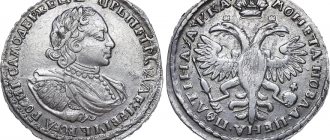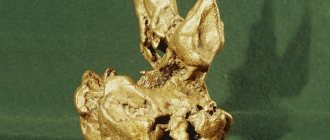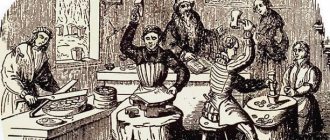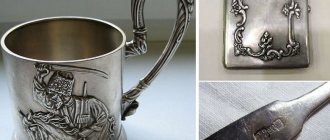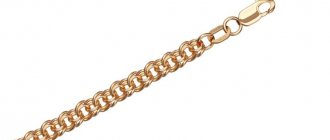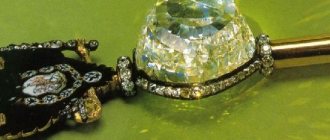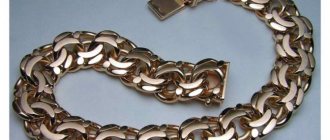The most expensive coins
The most expensive Russian coin that has been sold these days was minted during the reign of Elizabeth. A coin worth 20 rubles was sold for $2,900,000! The fantastic price is explained by the fact that it was never released in mass quantities.
This denomination appeared in the Russian coinage system only 60 years later. In total, two test coins with a nominal value of 20 rubles are known. One was previously in the collection of the Romanov heirs, the other is kept in the Hermitage.
Five rubles from the time of Elizabeth
Elizabeth's 10-ruble gold coins, the portrait of which was from the Swiss-born medalist J. Dacier, are no less fantastically valuable. Well-preserved chervonets at auctions cost an average of 500 thousand dollars per unit! A copy that was not in the best condition sold for one hundred thousand dollars.
This is explained by the fact that very few gold coins with the portrait of the Empress by Dacier were issued. The medalist simply did not please Elizabeth with his portrait. The Empress, a curvaceous woman, wanted to look just as magnificent in the portrait from which the stamps were made. But the Swiss did not know about this and engraved a portrait with a rather modest bust.
The Empress reluctantly allowed the work of the medalist at first, and the coins were minted for three months. Then she finally ordered to “set aside the stamp”, and at the mint they began to mint gold ducats by medalist Benjamin Scott, who portrayed the empress according to the required canons of beauty.
Zolotnik: the first Russian gold coin
Today the zlatnik or spool is a rarity. There are no more than 10 authentic copies of this first Russian gold coin in museum exhibitions throughout the country. This suggests that during the years of its circulation the coin was also not widely distributed. Zlatnik, which weighed 4.266 grams, gave birth to such a unit of mass measurement as the spool, which is why you can find this name.
The Novgorod and Kiev ruler Vladimir Svyatoslavich is famous primarily for baptizing Rus'. Vladimir began to reign in Novgorod in 970 and took the throne of Kyiv in 978. Ten years later, the prince was baptized according to the Greek canon and declared Orthodox Christianity the main religion of Kievan Rus at the state level.
If we talk about the spool, then its obverse depicted the prince seated on a throne in a headdress with pendants and a cross. The cross is also in the right hand of the ruler. He put his left one to his heart. The drawing is greatly simplified and disproportionate. To the right of it is a sign of the Rurik dynasty in the form of a trident. Around the picture there is the inscription “VLADIMIR ON THE TABLE” (“Vladimir is on the throne”) and a double dotted border.
The back of this ancient Russian spool shows a chest-high image of Jesus Christ with the Gospel in his left hand and his right hand extended forward. On the reverse there is the inscription “ISUS CHRIST” and a double dotted border.
It is not known for certain what the first gold coins were originally called. The name “zlatnik” stuck to them much later.
One of the copies of the spool is present in the exhibition of the St. Petersburg Hermitage. In total, 11 such Russian gold coins are known. The first of them was bought by a certain G. Bunge in 1796 from a soldier on the streets of Kyiv. The serviceman's mother gave it to him. In the same Kyiv, in 1815, another collector named Mogilyansky buys zlatnik from Bunge, but quickly loses it. Only a cast in plaster has survived, for which it later became famous among collectors.
At first, zolotniki were considered as Bulgarian or Serbian copies of Byzantine coins. However, later they began to be found in treasures along with Byzantine gold solidi of the 11th century. A deeper study and reading of the inscriptions made it possible to identify them as the oldest Russian gold coins.
The results of scientific research led to a revision of the entire Byzantine coin collection from the Hermitage exhibition in Russia. The famous Pinsk treasure contained as many as four specimens of goldenrod. The increased number of finds refuted the opinion that there was no monetary system in Rus' at the end of the 10th century. The Nezhinsky silver treasure of 1852 finally dispelled the doubts of scientists.
Today, the exact location of ten of the eleven first gold coins is known. Eight of them are in Russia (seven in the Hermitage and one in the State Historical Museum) and two in Ukraine - one each in the Odessa Archaeological and National Historical Museum.
The design of the spool was largely adopted from the Byzantine solids minted under Constantine VIII and Vasily II. Not only the design is the same, but also the weight, which in both cases is approximately 4.2 grams. The origin of most gold treasures comes down to the Kinburn or Pinsk treasures, dating back to 1863 and 1804, respectively. The first Russian gold coins were distinguished by high purity of gold metal from 916 to 958, which is very close to the Byzantine solidi of the X-XI century. They also weighed between 4.0 and 4.4 grams. To this day, people have preserved sayings using the name of this gold money, such as “the spool is small, but expensive.”
In 1988, in the Soviet Union, for the 1000th anniversary of these first ancient Russian minted coins, gold money with a nominal value of 100 rubles was issued, reproducing the design of the Vladimir zlatniks.
The prices of that period of time can tell a lot about the purchasing power of Russia's first gold money. Thus, the cost of slaves under the agreement between Prince Oleg and Byzantium was 20 spools. Under Prince Igor, they already paid 2 pavoloks for a commoner, 10 zlatnikov for a captured Russian or Greek girl, 8 for a middle-aged slave, 5 zlotnikov for an old man or child. The prices of the Slavic slave market corresponded to similar prices of the Roman slave trade in solidi. This once again proves that Vladimir’s zlotnik was identical in purchasing power to the Byzantine solidus. And the presence of spools in treasures throughout Eastern Europe indicates the international use of the first Russian gold coins on a par with the currency of the leading countries of that time.
The rarity of the money described is explained by the abrupt cessation of their production after the death of Prince Vladimir. The power struggle between Yaroslav and Svyatopolk and the arrival of troops from Poland under the leadership of Boleslav did not contribute to the continuation of the production of the first gold coins. Silver coins were produced to a limited extent in Novgorod. Later, the silver hryvnia was introduced.
A striking example of Russian money of that time is the silver coin minted under Yaroslav the Wise. The money was modeled after the dirham of Ulus Jochi. The difference was the casting of double-sided blanks instead of using round pieces cut from a sheet of silver. The names of Yaroslav, Svyatopolk and Vladimir are present on the coins. The quality of execution left much to be desired.
Copying samples from Byzantium, Russian masters used graphically executed designs on stamps. On the back of the spools there was usually a symbol of the Rurik dynasty in the form of a trident and an inscription in Cyrillic.
Below is the chronological sequence of events during which Russia historically acquired the right to its first gold coins:
- Dating back to 1791, the order of Empress Catherine II on the collection of ancient chronicle sources and other artifacts from monasteries with their ransom for a generous monetary payment.
- The discovery in 1792, among the valuables sent from Kyiv, of a hitherto unknown gold coin, which turned out to be “one legged” of Yaroslav the Wise, and the publication of this information in publications of progressive Europe.
- Discovery in 1796 in the city of Kyiv of the first zlatnik from the time of Prince Vladimir the First.
- Discovery of gold coins from Byzantine times in 1804 in the city of Pinsk. 20 of them, including 4 of the first Vladimir gold coins, are transferred to the St. Petersburg Hermitage.
- Finding Vladimir's silversmiths in Boryspil and on the territory of Poland in 1828 and 1829.
- Discovery in the city of Dorpat in 1839 of a silversmith from the time of Yaroslav.
- The discovery in 1852 of a huge Nizhyn treasure of ancient silver coins minted under Yaroslav, Svyatopolk and Vladimir the First, numbering approximately 180 copies.
- Near the town of Kinburn in 1863, the second batch of the first gold coins from the time of Vladimir was discovered.
- The discovery in 1876 of a large treasure of gold coins in Kyiv, which was distributed to private collectors in Russia.
- Find in 1912 among the Poltava treasure of Tatar and Arab money from Vladimir and Yaroslavl silversmiths.
- The so-called “Mitkovsky treasure” of 1955 with thirteen silver pieces from the time of Vladimir.
- Latvian silversmith found by Yaroslav in 1982.
Of all the first money in Russia
The most widespread today are silver coins minted under Prince Vladimir. They can even be purchased for between $15,000 and $20,000. A spool from the same time period is already worth six to eight times that amount. Yaroslav's silver pieces can be purchased from $40,000 to $60,000 per piece. These artifacts have such enormous value due to their small quantity, which is in the range of 10–20 pieces. In 1999, at an auction in Sweden, a previously unknown copy of such a rare silver coin surfaced and was sold. The history of the origin of many such rare lots remains unknown.
Coins of Nicholas II
Gold coins of Tsarist Russia before the accession to the throne of Nicholas II were little accessible to mere mortals. Few of them were minted, and they fell into the hands of mainly the richest segments of the population.
The last Russian autocrat minted a huge number of chervonets, which today are very popular among numismatists.
Under Nicholas II, a portrait of the emperor began to be printed on all gold coins, which had not been done for almost a century. True, the golden chervonets began to be inferior in weight to the previous ones: 8.6 grams versus 12.9 old Alexandrovsky chervonets.
After the monetary reform, gold coins of strange denominations of 15 rubles and 7 rubles 50 kopecks appeared. Moreover, the weight of 15 rubles was equal to the weight of the “Alexandrovsky” coin with a face value of 10 rubles. The circulation of these denominations was enormous. Every year - 12–15 million.
The cost of these coins today is small: 15 rubles are valued at about 400 dollars, and 7 rubles 50 kopecks - about 300. But there were precedents when 15 rubles of 1897 were sold at auction for 2,500 dollars, and 7 rubles 50 kopecks of 1897 - for 900 and even expensive. Again, it all depends on the condition of the coin.
For three years, imperials with a face value of 10 rubles and a weight of 12.9 grams and semi-imperials with a face value of 5 rubles were minted. Only 375 Imperials were minted, but they appear at auctions extremely rarely. Numismatists note that these coins disappear somewhere without a trace, so their value increases every year and at auction they cost from 50 to 250 thousand dollars.
Under Nicholas II, gift 25-ruble coins were minted. The gold coin was issued for the coronation of the autocrat and in honor of his fortieth anniversary in 1908. A 25-ruble note weighing 32.26 grams, issued in honor of the anniversary, is considered rare.
The entire circulation of coins was minted from a gold nugget from Siberia weighing five kilograms. All of them were given as gifts to friends and relatives. Although the coins were few and far between, they turn up at auctions from time to time. The cost of gift coins starts from one hundred thousand dollars per copy.
First gold: period of appearance
Gold was used for exchange by the Sumerians and ancient Egyptians at the dawn of civilization. The predecessors of coins were ingots, which were chopped into small fragments as needed or drawn into wire. Precious metal has always been part of the trading system and the standard in accounting for values. But it began to be used as a means of general circulation much later.
The first mention of a gold currency dates back to the 4th century BC. The Lydian economy used coins made of gold and silver alloys weighing from 0.2 to 18 grams, with the face of a ruler on one side and a lion or bull on the other. The coin gained particular significance only when separating metals, which was done by the ancient Greeks. This time is considered the origin of the tradition of making gold and silver coins separately and minting the profile of rulers on them.
Innovations of Peter the Great
In 1701, a new monetary unit appeared in Russia - the golden chervonets. The weight of the chervonets was 3.47 grams. It was made from 986-carat gold. The chervonets was identical to the Hungarian ducat and Ugric coins that came into use in past centuries.
At the indicated time, only 118 chervonets were minted. The only copy of the 1701 chervonets is kept in the Vienna Museum. It depicts the profile of the emperor himself, the coat of arms of the Russian Empire and the year of minting.
Somewhat later, around 1705-1706, the issue of money was established, the denomination of which was 2 chervonets, and the weight was 6.94 grams. The issue of chervonets with a denomination of 1 ruble continued until 1716. Starting from the indicated time, money with this denomination ceased to be minted; they were replaced by two-ruble chervonets. The one-ruble chervonets reappeared in use in 1729, already under Peter’s successors.
The minting of coins was in charge of the Kadashevsky gold yard, which produced chervonets from Chinese gold. A feature of the chervonets of the Petrine era was the absence of an indication of the denomination on them. The cost of a chervonets fluctuated depending on the economic situation and could be 1 or 2.3 rubles.
The share of gold could also fluctuate. Towards the end of the emperor's reign, the weight of the chervonets increased, but not due to the use of gold in minting, but due to the addition of other metals to the alloy. At the same time, the inscription “emperor” appears on the coins.
During the reign of Peter I, only 35 thousand chervonets were issued. It should be noted that not all of them had an image of the emperor. Thus, the front side of a chervonets issued in 1723 was decorated with the image of the Apostle Andrew. Among the people, such a chervonets was nicknamed “Andreevsky gold”.
"Transition" period
The era of the Roman Empire was a transition period for gold currency. The state minted Aurus coins weighing 7.5 grams and used them for administrative payments and settlements with legionnaires. The value of the metal still prohibited its use for everyday operations. However, everything changed in 300 BC. This period remained in history thanks to a significant reduction in gold supplies from Spain and Eastern Europe. And the heavy "Aurus" was replaced by "Solid".
This time in history is also associated with the emergence of the first coin houses and a sharp increase in the scale of minting. The vast territory of the Roman Empire produced coins on a scale comparable to modern ones. The decline and collapse of the state also affected the coin, the production of which was discontinued for almost a thousand years. Mention of “Solid” reappeared only with the advent of the Byzantine Empire.
This is interesting! The successor of the “Solid” - “Bizantin”, which was in circulation in Byzantium, is the prototype of the first Russian gold coins.
Zlatniki of Prince Vladimir
The end of the tenth century - this is where the starting point of the production of Russian gold coins is hidden. This is the period of the princely power of Vladimir the Holy, Svyatopolk the First and Yaroslav the First Vladimirovich. The design of the coins borrows from Byzantine art. The obverse side of the coin was decorated with a portrait of the Grand Duke, who always held a trident (for Kievan Rus it represented a symbol of supreme power). On the other side was the face of Jesus Christ. In the hand of the Son of God was the Gospel. This side marks that the Russian lands accepted Baptism.
Above we present a gold medal from the 10th-11th centuries of Prince Vladimir from the Hermitage collection. Zlatnik is considered the first Russian coin. So far, only eleven similar coins have been found. It was also called “zolotnik”. This is where the roots of the unit of measurement of mass of the Russian system of measures grow, as well as the famous folk proverb “Small is the spool, but dear.”
